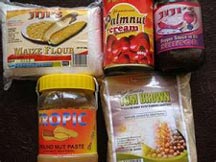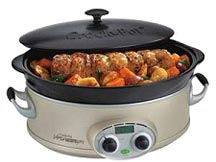Simple Ways to Reduce Your Salt Intake
By Patty Liston
 When it comes to sprinkling salt on my food, I seldom if ever pick up the salt shaker. To many I am indeed a freak. I know people who carry individual salt packets just in case they need it. Salt is one of those spices that many cannot live without and as it turns out, many can't live with.
When it comes to sprinkling salt on my food, I seldom if ever pick up the salt shaker. To many I am indeed a freak. I know people who carry individual salt packets just in case they need it. Salt is one of those spices that many cannot live without and as it turns out, many can't live with.
 There has been quite a bit of talk by medical professionals around the high consumption of salt by most Americans. The concern rests in the data that indicates high salt intake equals high blood pressure, which can lead to stroke, heart attack, osteoporosis and asthma. By "high", professionals mean anything over 6 grams, or 1 teaspoon!
There has been quite a bit of talk by medical professionals around the high consumption of salt by most Americans. The concern rests in the data that indicates high salt intake equals high blood pressure, which can lead to stroke, heart attack, osteoporosis and asthma. By "high", professionals mean anything over 6 grams, or 1 teaspoon!
Because much of what we eat is laced with salt, how do we know how much we are getting? Many products list the presence of salt on the "ingredient" label. Look for "sodium" on the label and multiply that number by 2.5 in order to determine the salt content.
• 0.1 g of sodium is low salt
• 0.2-0.4 g is medicum salt
• 0.5 and over is high salt content
If you would like to begin limiting your salt in-take, there are several salt substitutes you can use. However, it is best to check with your doctor before using them - especially if you are on a salt restrictive diet. According to the Cleveland Clinic, "the problem lies in the potassium chloride which is used in place of sodium chloride. If you have heart or kidney problems or are on certain medications, the potassium chloride can cause more problems than the salt you are trying to avoid".
If you are looking for some other ways to limit your salt intake, try some of the following ideas:
 Use fresh ingredients rather than processed foods
Use fresh ingredients rather than processed foods
You'll save a lot of milligrams of sodium by making your own sauces and soups, and simmering dried beans until soft (rather than opening a can). Like most fresh cooking, this is will take up more of your time but your body will love you. Consider taking part of one day to make large portions that you freeze and have ready when needed.
 Choose convenience foods wisely.
Choose convenience foods wisely.
Purchase frozen vegetables over canned or those with a sauce on them. Check labels and look for low or reduced sodium packages and cans. You may also choose to rinse the foods in a colander before using them to get rid of some of the salt. If something already contains a high salt content, that would be no need to add additional salt to the recipe.
 Add salt AFTER cooking, not during
Add salt AFTER cooking, not during
Adding salt to foods while they are cooking does not necessarily enhance flavor. Instead, try adding this spice to the food once it is served and on your plate. You will find that a little bit goes a long way to providing you the flavor you want.
 Use your measuring spoons
Use your measuring spoons
We have all had foods that were over-salted and as cooks, we don't want to make that mistake!
Start by adding 1/8 of a teaspoon of salt at a time. If you like your foods REAL salty, ask someone else to judge the flavor. Remember: you can always add salt, but once served, you can't make it magically disappear!
 Go "Natural"
Go "Natural"
Roast or grill your vegetables to enjoy their own natural flavors. Also, spend some time looking at all of the different, creative spices on the spice aisle of your local grocery store. Consider experimenting with some of the different natural and "no salt" spices such as cajan, flavored peppers, bar-b-que, tex-mex, and others. You'll be so amazed at the flavor you won't miss your salt one bit!

